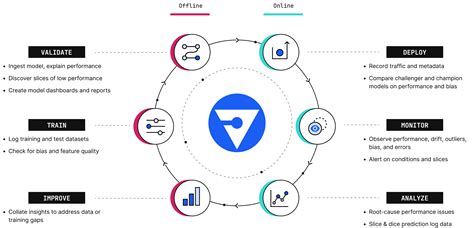As machine learning (ML) models become increasingly integral to business operations, monitoring their performance is crucial for ensuring they continue to deliver accurate and reliable results. ML models are not static entities; they can drift over time due to changes in the underlying data distributions, concept drift, or other environmental factors. Effective model monitoring is essential for identifying these changes, understanding their impact, and making necessary adjustments to maintain model performance. In this article, we will delve into five model monitoring tips that can help organizations keep their ML models performing optimally.
Key Points
- Implementing data quality checks to ensure input data integrity
- Monitoring model performance metrics for early detection of drift
- Using techniques like retraining and model updating for adaptation
- Conducting regular model interpretability analyses for transparency
- Integrating human oversight and feedback for continuous improvement
Understanding the Importance of Model Monitoring

Model monitoring is a critical component of the machine learning lifecycle. It involves tracking the performance of deployed models over time, identifying potential issues, and taking corrective actions to maintain or improve their accuracy and reliability. The importance of model monitoring can be understood from several perspectives, including maintaining data quality, ensuring compliance with regulatory requirements, and adapting to changing market conditions or user behaviors.
Data Quality and Integrity
Data quality is foundational to the performance and reliability of ML models. High-quality data that is relevant, accurate, and consistent is essential for training models that can generalize well to new, unseen data. However, data distributions can change over time due to various factors, including seasonal variations, changes in user behavior, or shifts in market trends. Implementing robust data quality checks can help detect these changes early, allowing for timely interventions to maintain model performance.
| Data Quality Metric | Description |
|---|---|
| Accuracy | Proportion of correctly labeled data points |
| Completeness | Proportion of data points with all required features |
| Consistency | Level of uniformity in data formatting and representation |

Model Performance Monitoring

Monitoring model performance involves tracking key metrics that indicate how well the model is doing in terms of accuracy, precision, recall, F1 score, mean squared error, or other relevant metrics depending on the problem type (classification, regression, etc.). This monitoring can be done in real-time or near real-time, allowing for quick identification of performance degradation. Techniques such as retraining the model on new data, updating the model architecture, or incorporating ensemble methods can be employed to adapt the model to changing conditions.
Techniques for Model Adaptation
Several techniques can be used to adapt ML models to changing data distributions or performance metrics. These include:
- Retraining: Periodically retraining the model on new data to adapt to changes in the underlying distribution.
- Model Updating: Incrementally updating the model with new data, which can be more efficient than retraining the model from scratch.
- Ensemble Methods: Combining the predictions of multiple models to improve overall performance and robustness.
Model Interpretability and Transparency
Model interpretability refers to the ability to understand and explain the predictions and decisions made by an ML model. As models become more complex, ensuring interpretability is crucial for building trust in the model’s outputs and for regulatory compliance. Techniques such as feature importance, partial dependence plots, and SHAP values can provide insights into how the model is using input features to make predictions.
Regular Interpretability Analyses
Conducting regular interpretability analyses can help in understanding how the model is performing and whether it is making decisions based on the intended features. This can also help in identifying biases in the model and taking corrective actions to mitigate them.
Human Oversight and Feedback
Finally, integrating human oversight and feedback into the model monitoring process is essential. Human evaluators can provide context and judgment that may not be captured by automated metrics, ensuring that the model is performing in a way that is consistent with business goals and ethical standards. Feedback from human evaluators can be used to adjust the model, improve its performance, and ensure that it continues to meet the required standards.
What is the primary goal of model monitoring in machine learning?
+The primary goal of model monitoring is to ensure that deployed machine learning models continue to perform optimally and make accurate predictions over time, despite changes in the underlying data distributions or other factors.
How can data quality issues impact model performance?
+Data quality issues such as inaccuracies, inconsistencies, or missing values can significantly impact model performance, leading to decreased accuracy, precision, and reliability of the model's predictions.
What role does human oversight play in model monitoring?
+Human oversight is crucial in model monitoring as it provides a layer of judgment and context that automated systems may lack. Human evaluators can review model performance, identify biases, and ensure that the model aligns with ethical and business standards.
In conclusion, model monitoring is a multifaceted process that involves ensuring data quality, tracking model performance, adapting to changes, maintaining interpretability, and integrating human oversight. By following these five model monitoring tips, organizations can keep their ML models performing at optimal levels, adapt to changing conditions, and ensure that their models continue to deliver value and insights over time.
